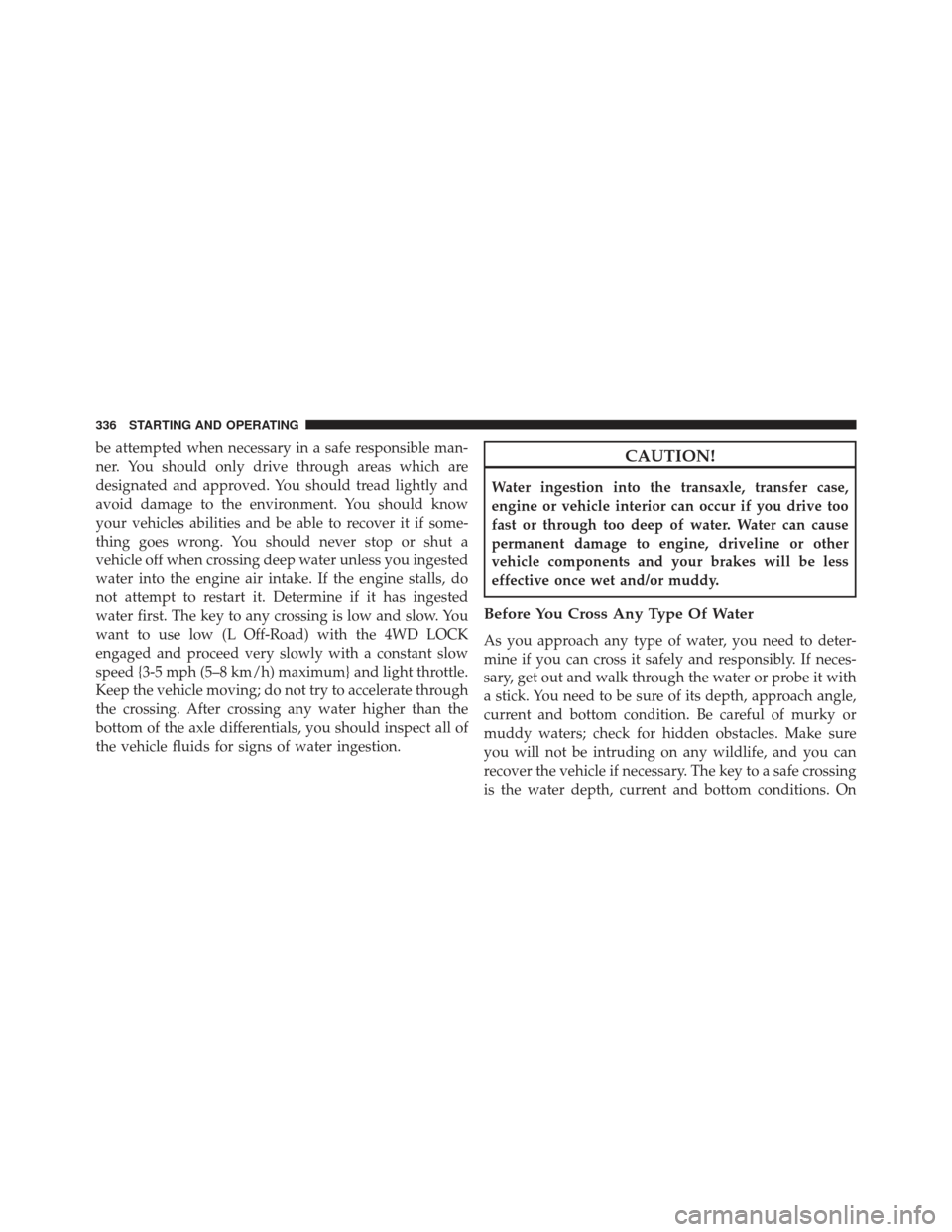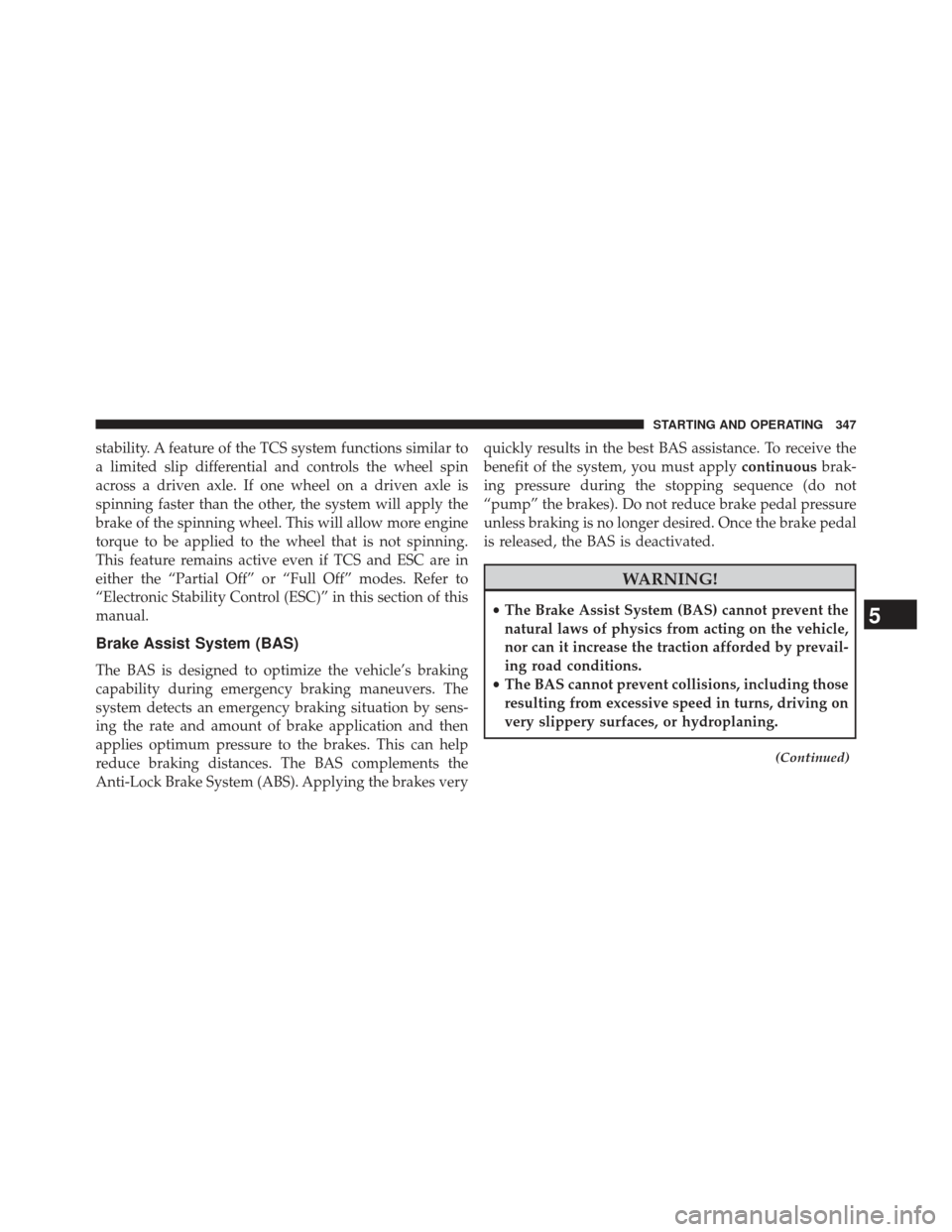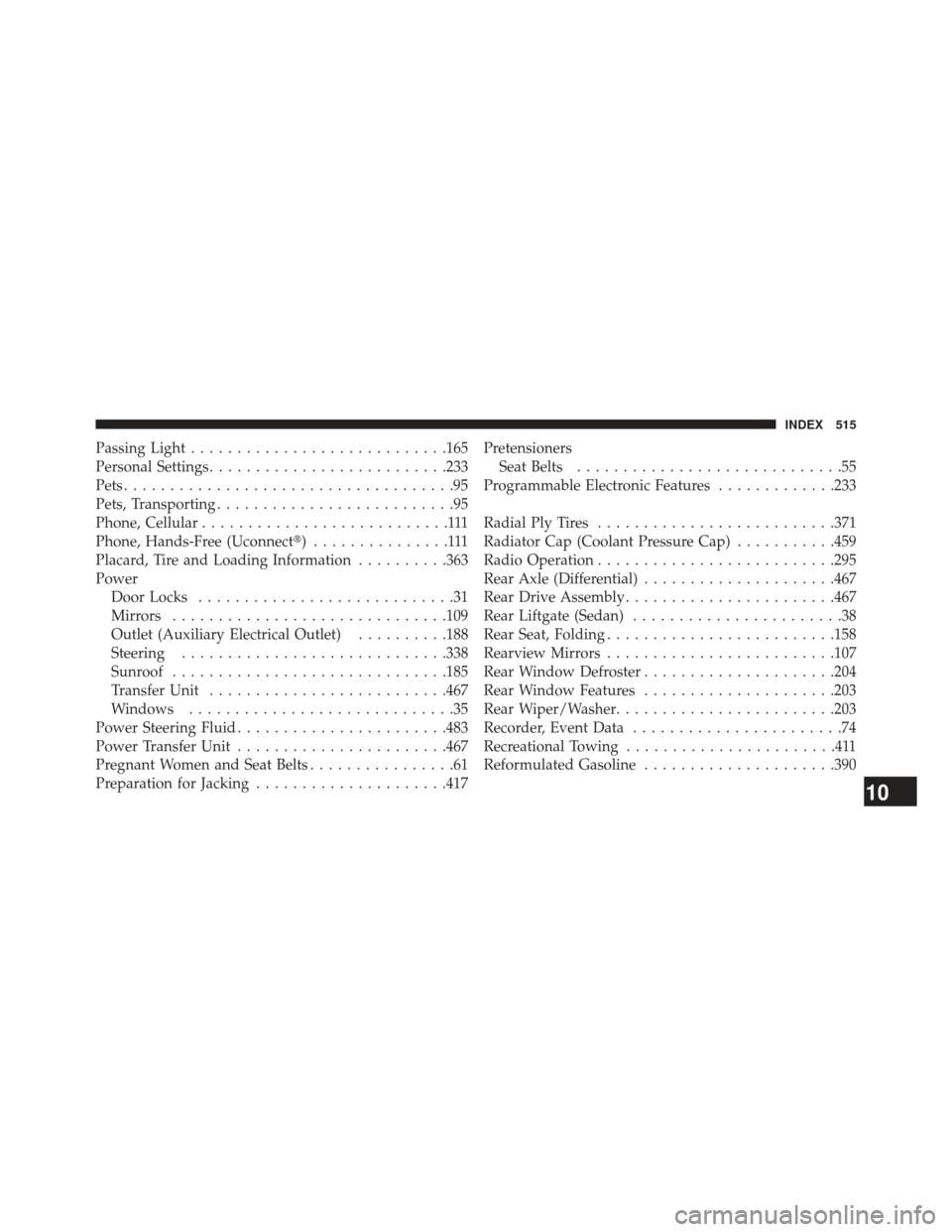Page 338 of 525

be attempted when necessary in a safe responsible man-
ner. You should only drive through areas which are
designated and approved. You should tread lightly and
avoid damage to the environment. You should know
your vehicles abilities and be able to recover it if some-
thing goes wrong. You should never stop or shut a
vehicle off when crossing deep water unless you ingested
water into the engine air intake. If the engine stalls, do
not attempt to restart it. Determine if it has ingested
water first. The key to any crossing is low and slow. You
want to use low (L Off-Road) with the 4WD LOCK
engaged and proceed very slowly with a constant slow
speed {3-5 mph (5–8 km/h) maximum} and light throttle.
Keep the vehicle moving; do not try to accelerate through
the crossing. After crossing any water higher than the
bottom of the axle differentials, you should inspect all of
the vehicle fluids for signs of water ingestion.CAUTION!
Water ingestion into the transaxle, transfer case,
engine or vehicle interior can occur if you drive too
fast or through too deep of water. Water can cause
permanent damage to engine, driveline or other
vehicle components and your brakes will be less
effective once wet and/or muddy.
Before You Cross Any Type Of Water
As you approach any type of water, you need to deter-
mine if you can cross it safely and responsibly. If neces-
sary, get out and walk through the water or probe it with
a stick. You need to be sure of its depth, approach angle,
current and bottom condition. Be careful of murky or
muddy waters; check for hidden obstacles. Make sure
you will not be intruding on any wildlife, and you can
recover the vehicle if necessary. The key to a safe crossing
is the water depth, current and bottom conditions. On
336 STARTING AND OPERATING
Page 349 of 525

stability. A feature of the TCS system functions similar to
a limited slip differential and controls the wheel spin
across a driven axle. If one wheel on a driven axle is
spinning faster than the other, the system will apply the
brake of the spinning wheel. This will allow more engine
torque to be applied to the wheel that is not spinning.
This feature remains active even if TCS and ESC are in
either the “Partial Off” or “Full Off” modes. Refer to
“Electronic Stability Control (ESC)” in this section of this
manual.
Brake Assist System (BAS)
The BAS is designed to optimize the vehicle’s braking
capability during emergency braking maneuvers. The
system detects an emergency braking situation by sens-
ing the rate and amount of brake application and then
applies optimum pressure to the brakes. This can help
reduce braking distances. The BAS complements the
Anti-Lock Brake System (ABS). Applying the brakes veryquickly results in the best BAS assistance. To receive the
benefit of the system, you must apply
continuousbrak-
ing pressure during the stopping sequence (do not
“pump” the brakes). Do not reduce brake pedal pressure
unless braking is no longer desired. Once the brake pedal
is released, the BAS is deactivated.
WARNING!
• The Brake Assist System (BAS) cannot prevent the
natural laws of physics from acting on the vehicle,
nor can it increase the traction afforded by prevail-
ing road conditions.
• The BAS cannot prevent collisions, including those
resulting from excessive speed in turns, driving on
very slippery surfaces, or hydroplaning.
(Continued)
5
STARTING AND OPERATING 347
Page 517 of 525

Passing Light........................... .165
Personal Settings ......................... .233
Pets ....................................95
Pets, Transporting ..........................95
Phone, Cellular ...........................111
Phone, Hands-Free (Uconnect�) ...............111
Placard, Tire and Loading Information ..........363
Power Door Locks ............................31
Mirrors ............................. .109
Outlet (Auxiliary Electrical Outlet) ..........188
Steering ............................ .338
Sunroof ............................. .185
Transfer Unit ......................... .467
Windows .............................35
Power Steering Fluid ...................... .483
Power Transfer Unit ...................... .467
Pregnant Women and Seat Belts ................61
Preparation for Jacking .....................417 Pretensioners
Seat Belts .............................55
Programmable Electronic Features .............233
Radial Ply Tires ......................... .371
Radiator Cap (Coolant Pressure Cap) ...........459
Radio Operation ......................... .295
Rear Axle (Differential) .....................467
Rear Drive Assembly ...................... .467
Rear Liftgate (Sedan) .......................38
Rear Seat, Folding ........................ .158
Rearview Mirrors ........................ .107
Rear Window Defroster .....................204
Rear Window Features .....................203
Rear Wiper/Washer ....................... .203
Recorder, Event Data .......................74
Recreational Towing .......................411
Reformulated Gasoline .....................390
10
INDEX 515